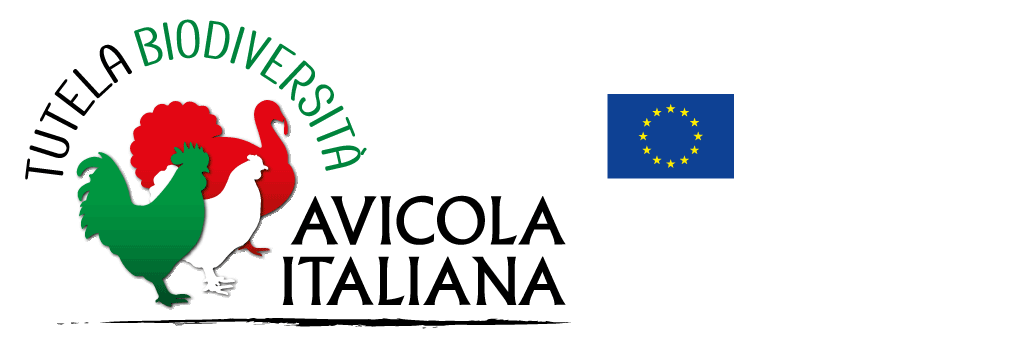Siciliana
Geographic origin: Sicily
Geographic distribution: Siciliy and other southern Italy regions
Estimated total population size: 186 (Castillo et al., 2021)
Extinction risk status (FAO, 1998): Threatened conserved
Any other specific information: Medium-sized chicken breed
Historical origin of the breed
It is a very ancient breed, the most ancient European breed according to come Authors. It is believed that this breed originated from hybridisations between local breeds from Sicilian countryside and Tripolina breed, from northern Africa. The antique origin of the breed is testified by ancient Greek coins and by vases and mosaics from the Roman times that represent the “crowned cock”.
The breed was exported to America between 1830 and 1860 by Captain Dawes, who bought great numbers of chicken to provide the crew with eggs and meat during their journey back to Boston. The hens proved to be excellent layers, so the birds that reached the United States were carefully selected by American breeders. More chickens were imported during the following years. In particular, the selection of birds imported in 1892 led to a breed, that was named Sicilian Buttercup, from which the chickens available nowadays were originated. The breed was imported also to England, where it has been successfully raised ever since the beginning of the 1900. On the contrary, the local populations in Sicily have been progressively disappearing.
Bibliography
Giavarini I (1983). Le razze dei polli. Edagricole, Bologna
Ghigi A (1968). Trattato di avicoltura. U.T.E.T., Torino
livestockconservancy.org/heritage-breeds/heritage-breeds-list/buttercup-chicken/
Qualitative morphological traits
Feather morphology: Normal
Feather distribution: Normal
Plumage structure: Abundant and soft, well adherent to the body, with stiff shaft feathers
Plumage colours: Brown wild (Selvatica bruna), Golden (Collo oro), Black, White, Blue
Colour features:
Single colour, without sexual dimorphism: Black, White, Blue
Bi-colour, with sexual dimorphism: Brown wild, Golden
Colour pattern:
Brown wild: in the male, head gold brown, neck hackles gold brown more or less striped with black. Back, shoulders, and wing coverts dark red brown. Main wing coverts black with metallic green/blue sheen. Saddle hackles red brown to gold brown, with light black striping permitted. Primaries black with narrow brown edging on the outer web. Secondaries inner colour and tips black, outer colour red brown forming brown wing bay. Breast, belly, and legs black, with brown traces permitted. Tail black with green sheen, brown edging on lesser sickles permitted. Down grey. In the female, head gold brown to red brown, neck hackle gold brown to red brown with black striping. Remainder of plumage is brown with black peppering (uneven and not fine) on every feather; light shafts. Primaries, outer barbs black with narrow brown edging and brown peppering, inner barbs black with brown peppering, secondaries, outer rusty brown barbs with blackish peppering and inner barbs black. Tertiaries barred with black. Main tail coverts rusty brown with black peppering and main tail feathers black. Breast dark salmon. Belly and legs brown with greyish peppering.
Golden: in the male, head intense gold yellow, neck hackle gold yellow, slightly yellow toward the end, with black striping. Back, shoulders, and wing coverts brilliant dark red. Saddle hackles gold yellow with black striping. Main wing coverts black with metallic green/blue sheen. Primaries black, narrow brown border on the outer web permitted. Secondaries with inner colour and tips black and with outer colour brown forming wing bay. Breast black free from traces of brown. Belly and legs black. Tail black with strong green sheen. Down greyish. In the female, head gold yellow, neck hackle gold yellow with black striping. Plumage gold/brown with fine and even black peppering, slightly ligher shaft permitted. Primaries black with narrow peppered brown outer edging. Secondaries with inner colour and tips black, outer colour peppered brown. Breast salmon, darker in the upper part, with slightly lighter shaft. Legs and belly grey/brown. Tail black, the two main tail feathers marked as the rest of the plumage permitted.
Black: in the male and in the female, the plumage is intense black, with green sheen in the cock. In young birds, light shading of the shank is admitted. The down is black.
White: in the male and in the female, the plumage is pure white, brighter in the cock. The down is white.
Blue: in both male and female, plumage is uniform pigeon blue. Feathers can have a slight edging. Down light blue. In the male, head, neck hackle, wing coverts, and saddle hackles dark blue to brilliant velvet black/blue. In the female, neck hackle dark blue.
Chick plumage colour:
Brown wild, Golden: chick down similar to adult down, with white/yellowish streaks on the back
Black, White, Blue: yellow, black
Iris colour: Red-dark orange
Comb type: Buttercup comb, red and upright, with a fine and smooth texture. It begins as a simple comb at the base of the beak and then, at the second point, it acquires the cup shape, preferably closed in the back. Well-formed cup, smooth inside.
Comb spikes: Preferable five regular spikes on each side, carried upright and well perpendicular. Slightly sloping is admitted in laying hens.
Ear-lobe colour: Red or slightly streaked with white
Beak colour: Yellow with dark-horn stripes in the Black and Brown wild; yellow in the White and the Blue
Skin colour: Yellow
Shank colour: Willow green
Shank feathering: Free from feathers
Quantitative morphological traits

Reproductive and productive quantitative traits
Oviposition, brooding and incubation data
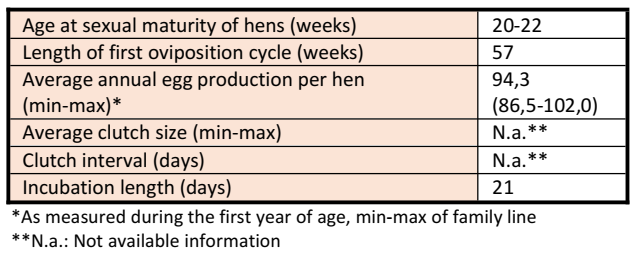
Egg-quality traits

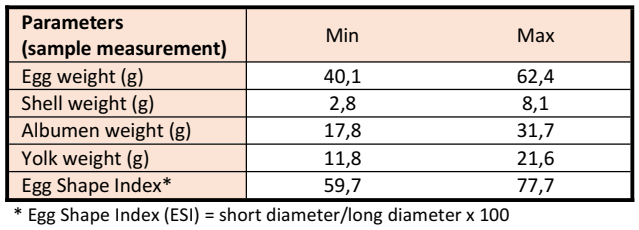
Reproductive traits
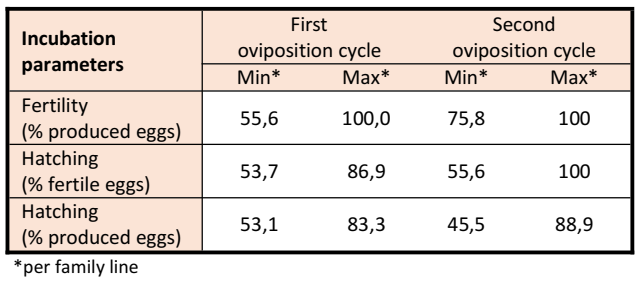
Body weight and growth data
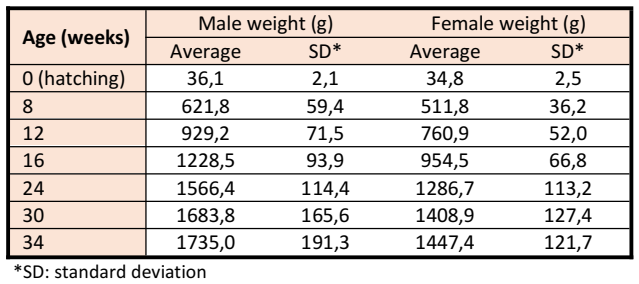
Mortality

Rearing traits
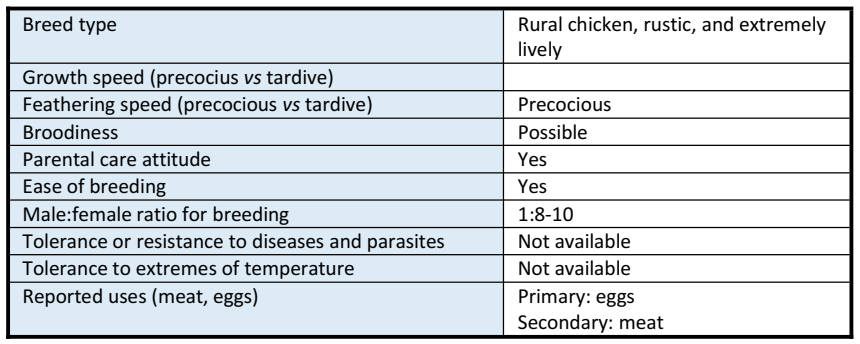
The presented data were registered in nucleus populations conserved at the University of Molise (UniMOL) and at the University of Pisa (UniPI).
Latest update: January 24th, 2023
Germplasm collection
The breed is conserved in our Cryobank with 514 semen doses from 22 donors.
